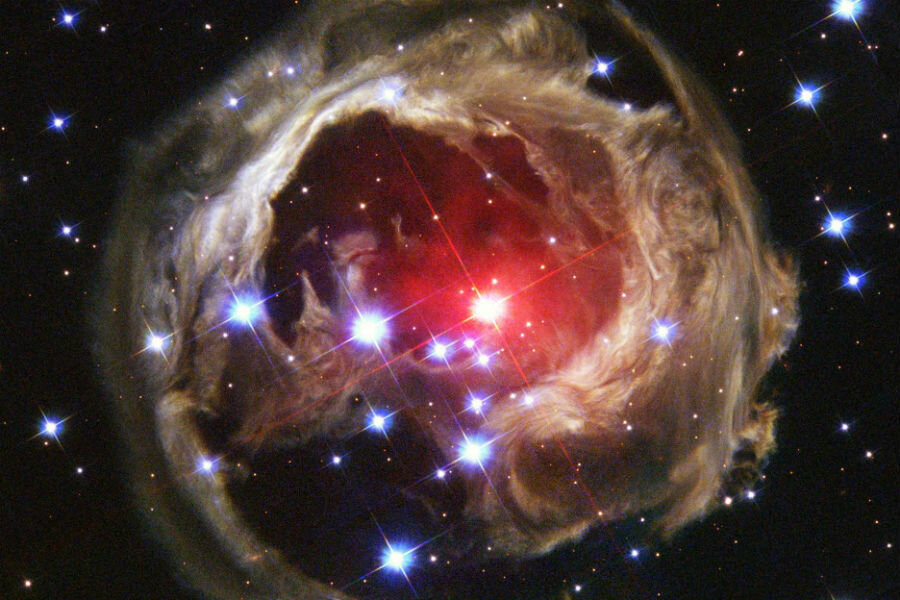Binary bump: How a new 'star' could appear in our night sky in five years
In 2022, a new, temporary star of sorts could be added to the night sky.
A group of astronomers has predicted that, five years from now, two faraway binary stars currently orbiting each other will collide, creating an explosion so bright that it will be visible to the naked eye. If accurate, the so-called "red nova" would be the first ever to be predicted by scientists on Earth.
By studying the stars in these final years before the predicted collision, scientists hope to be able to gather valuable information on how binary stars behave in their final years before this kind of explosion. Such observations could provide valuable insights into certain universal mechanisms that are not yet fully understood by astronomers.
The story of the 2022 prediction actually starts in 2008, when a star known as V1309 Scorpii suddenly exploded, temporarily brightening considerably in the night sky. While similar bright explosions had happened before, incidental observations of the binary star system had been made before the explosion actually occurred, revealing some unusual patterns in how the stars moved around each other before they collided.
In 2013, Larry Molnar, an astronomer at Calvin College in Grand Rapids, Michigan, began a study of a binary star system known as KIC 9832227 when it was found that the star's orbital period, the length of time it takes for a star to make one complete orbit around another object, was slightly less than earlier observational data had indicated. Dr. Molnar noticed that the V1309 Scorpii data leading up to the nova was strikingly similar to what was happening to KIC 9832227. He hypothesized that the degradation in the orbital period would soon collapse completely, causing a massive collision. Over the next few years, he was able to develop a more precise date for the event: sometime in 2022.
"If Larry's prediction is correct, his project will demonstrate for the first time that astronomers can catch certain binary stars in the act of dying, and that they can track the last few years of a stellar death spiral up to the point of final, dramatic explosion," said Matt Walhout, dean for research and scholarship at Calvin College, in a statement.
This "death spiral" will likely end in a "lumnious red nova." As implied by its name, these types of stellar explosions are red in color, and are thought to be caused by this kind of binary collision. The nova would increase the stars' brightness by about 1,000 times, and would theoretically become visible to the naked eye on Earth.
"The project is significant not only because of the scientific results, but also because it is likely to capture the imagination of people on the street," said Walhout in the statement. "If the prediction is correct, then for the first time in history, parents will be able to point to a dark spot in the sky and say, 'Watch, kids, there’s a star hiding in there, but soon it's going to light up.'"
Technically, for the stars' collision to be visible from Earth in 2022, the red nova would have taken place nearly 1,800 years ago, as the star is about 1,800 light-years away from our planet. But since there is no way to observe a nova without light, it will be impossible to know for sure when the collision occurred until the light reaches us.
"It's a one-in-a-million chance that you can predict an explosion," Molnar said in the statement. "It's never been done before."
Even if the explosion never happens, scientists are often able to learn just as much, if not more, from an incorrect hypothesis than they can from a correct one. But Molnar's team is hoping for the best, planning to continue monitoring KIC 9832227 closely over the next five years in order to better understand the events leading up to the nova.
"At this point we have now made over 33,000 images of the star with Calvin College telescopes on more than 170 nights of observing," Molnar told Vox. "In a sense, that investment is my bet that this is going to be worthwhile."






